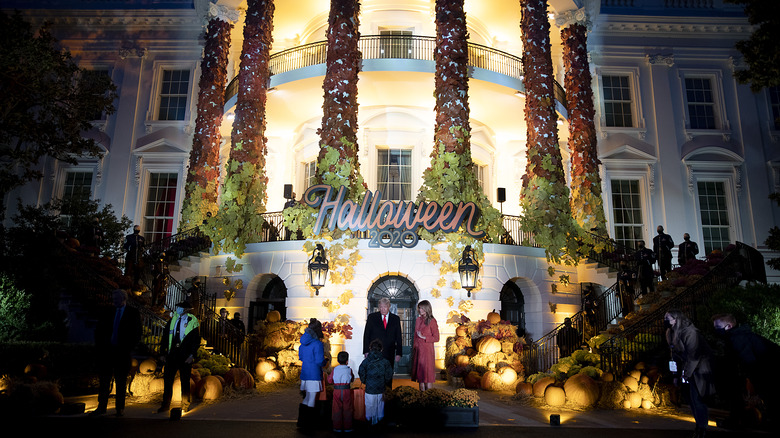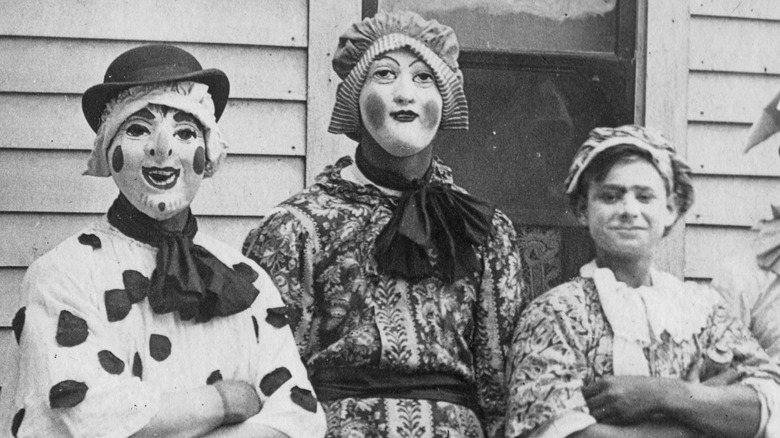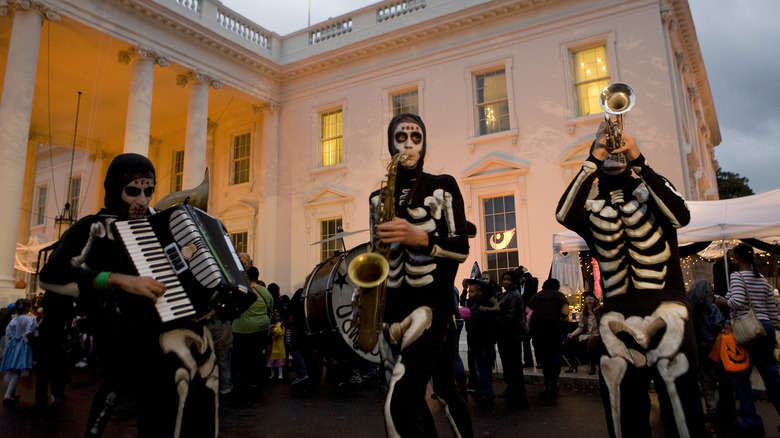When Was The First White House Halloween Celebration?
Much of America loves Halloween, make no mistake. According to Finical Holdings, in 2020 we spent $8 billion on candy, costumes, props, and similar Halloween-related items. We also have the overwhelming majority of the world's paid haunted house attractions. Though the holiday originated in the British Isles, at the hazy intersection between Christianity and paganism, it's now a non-event there, as The Guardian reports.
Considering that Halloween is basically a uniquely American holiday now, it would make sense that a visual metaphor for our government — the White House — and its residents have embraced the holiday. Presidents and their families have been decorating the august mansion for the holiday since 1958, according to the White House's website, right about the time Halloween as we know it (via Better Homes & Gardens) started to gain traction in the States. Clearly even the presidents recognize that Halloween fun isn't just for kids anymore.
Two Halloweens
The first White House Halloween celebration dates to 1958, during the Eisenhower administration, according to the White House website. However, Americans were celebrating the holiday for a century or more before that, so why did the president (or more accurately, the first lady) wait until the latter half of the 20th century to acknowledge it?
In a manner of speaking, there have been two Halloweens in American history. The first version of Halloween focused less on the "trick-or-treat" aspect of things, and more on the "trick" aspect. As History reports, the holiday bore many of the hallmarks still celebrated today — costumes, parties, backyard haunted attractions — but also leaned heavily into vandalism and mayhem, particularly among children.
This precipitated a cultural shift in the way Americans look at Halloween. Great efforts were taken to get children off the streets by encouraging them to go to their neighbors' houses for fun (non-criminal) activities. According to a blog post at Merriam-Webster, the phrase "trick or treat" first shows up in print in the 1920s. By the 1950s, the holiday had become more commercial, more innocent. Cities and towns, having largely gotten a handle on the shenanigans of the holiday, effectively transformed it into what it is (mainly) today: costumed children going from house to house, politely asking their neighbors for candy.
Eisenhower through Biden
By the latter half of the 1950s, Halloween in America had become a retail holiday focused on children having good fun, and had become divorced from its roots in juvenile lawbreaking. In 1958, then-first lady Mamie Eisenhower became the first to celebrate the holiday at the White House. According to the White House website, she hosted a luncheon for the wives of her husband's staff members, and decorations included what you'd normally see at any other Halloween party: shocks of dried corn, pumpkins, red apples, and the like. Insider notes that since then, every POTUS has welcomed trick-or-treaters to the mansion.
White House Halloween celebrations have had to be scaled back or canceled on a couple of occasions, according to NPR News. In 2012, the Obama White House canceled trick-or-treating in the wake of Hurricane Sandy, and last year the Biden White House, though decorated for the holiday, didn't welcome trick-or-treaters, as the president and first lady were out of town that day. Nevertheless, they encouraged kids to trick-or-treat elsewhere in Washington.


